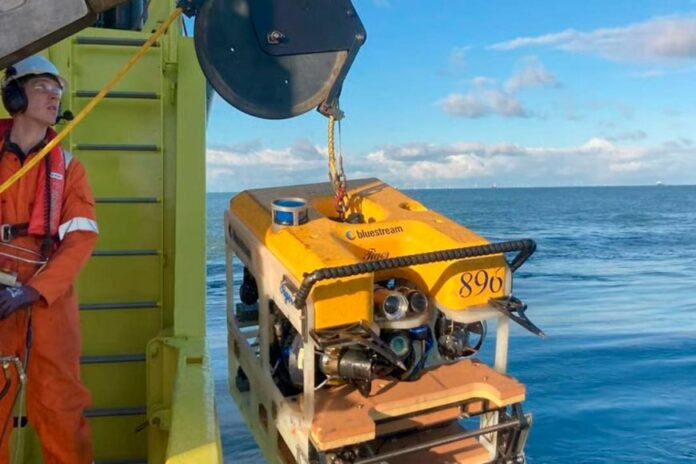There is no doubt that building offshore wind turbines affects marine life. But what exactly are the effects and what can we learn from them? To provide insight, a new remote-controlled tool has been designed to sample the biological growth on offshore wind turbine foundations.
To survey marine growth safely and efficiently on offshore wind turbine foundations in the North Sea, Bluestream collaborated with Wageningen Marine Research (WMR) to develop the remotely controlled Marine Growth Sampling Tool. In early stages, the foundation substrates are covered by algae and various sea creatures. Over time, the number of small sea creatures attaching to the substrate and the algae increases. Previously, this type of research was carried out by SCUBA divers, a method that has become increasingly difficult due to strict laws and regulations, health and safety rules, and the high costs associated with it.
Vattenfall was able to make one of the Hollandse Kust Zuid wind farm foundations available for the study due to the fact that in January 2022, during a storm, the Julietta D vessel collided with the wind turbine foundation that was under construction, rendering it unusable. The turbine was removed, but the foundation was left behind.
Joop Coolen, researcher at WMR, explains why such research on marine life is necessary: “We investigate the composition of marine species on hard substrates, not only wrecks and stones lying on the bottom of the North Sea, but also gas platform and wind turbine foundations. Various species settle on hard surfaces rather than in sandy environments, leading to different biological processes. We strive to understand how these processes evolve over time and what their role is in the ecosystem, where living organisms interact with their non-living environment.”
“We did the first tests of the tool in our pool, but naturally, the main question was whether the tool would work offshore,” says Jan-Jelle Huizinga, R&D manager at Bluestream. With a vessel provided by Rijkswaterstaat, part of the Dutch Ministry of Infrastructure and Water Management, the real test could begin. “Out at sea, this allowed us to test the stability and positioning of the tool. It went better than expected,” he continued. “We still need to improve the net where the samples are collected as it’s not yet functioning ideally.”
For WMR, it is crucial that the tool consistently scrapes the same surface area in order to quantify the total marine growth on the foundation. For Vattenfall, it was crucial to ensure that the tool would not damage the foundation coating. Ultimately, the coating protects the steel of the foundation. “We agreed to test different scraping materials and examine the samples for coating residues,” Huizinga further says of the study. The tool was tested using different plastic scrapers (made of polyurethane to be precise) and a metal scraper. “The plastic scraper worked much better than expected and had a much lower risk of damaging the coating.”
WMR measured the number, length, and width of the coating particles found; however, as the lab was unable to measure the thickness of the small coating particles present in the samples, they are currently being subjected to further investigation. That said, very little coating residue was found, the size of which was less than 1/20,000th of the sampled area.


